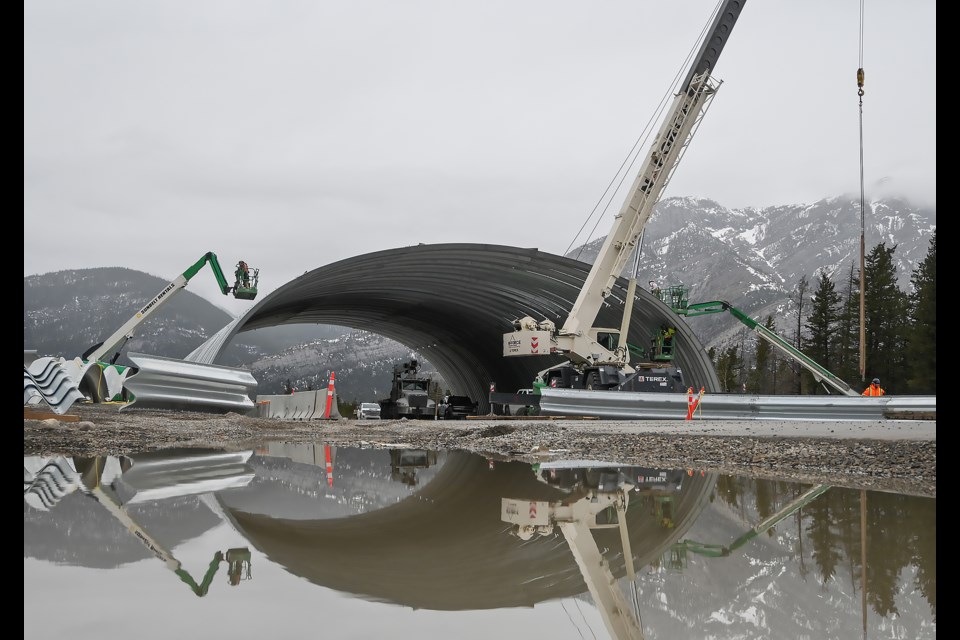KANANASKIS COUNTRY – Design and resulting safety concerns identified by Alberta’s government have put the opening of a wildlife overpass near Lac Des Arcs on pause until next summer.
The $17.5 million Stoney Nakoda Exshaw Wildlife Arch aimed at reducing vehicle collisions with wildlife on a hazardous stretch of the Trans-Canada Highway was initially set for fall 2023 completion. Wayne Wood, a spokesperson with Alberta Transportation, however, confirmed the contractor is required to address identified issues by the province before “full construction is achieved.”
“Contract challenges have resulted in delays to completion of the wildlife overpass,” Wood said in an email.
“I don’t have complete specifics, but this type of overpass is unique and had some design challenges, which the contractor has been able to adjust to, but that put the project behind schedule.”
The Outlook reached out to the contractor, PME Inc. for comment and this story will be updated if a response is received.
Wood said opening had to be delayed to ensure the project is completed safely and efficiently, and in accordance with provincial safety standards.
Other remaining work includes concrete, traffic barriers, fencing and landscaping. The eastbound side of the highway near the underpass remains closed while the westbound side of the highway is open to two-way traffic. Construction zone speed limit reductions are still in effect.
Included in the project’s design is 12 kilometres of wildlife fencing along the highway to shepherd wildlife toward safe crossing points. There are also jump-outs to allow wildlife stuck on the highway to safely get to the other side of the fence.
According to Alberta Transportation, between 2010-19, there were 105 animal collisions, or around 11 per year within 10 kilometres of the overpass site.
When completed, the overpass will span four lanes, with room for the potential addition of a third lane on either side of the highway and two 24-metre wide steel arches, terraformed to allow for the safe movement of species such as elk, deer, bighorn sheep, wolves, black bears and grizzly bears.
The project has long been called for by environmental groups like Yellowstone to Yukon Conservative (Y2Y) Initiative as a critical wildlife link and by Îyârhe Nakoda First Nation. A 2012 study that looked at highway wildlife mitigation along the busy route between Banff National Park and Highway 40 flagged the area chosen for the overpass as having one of the highest rates of animal-vehicle collisions.
The study’s lead, Banff-based scientist Tony Clevenger, told the Outlook in a 2021 interview on the news the overpass would be built that the site is one of many along the highway where collision risks with wildlife are high and better connectivity is needed.
“This is an important first step for Alberta Transportation as it starts utilizing roadkill and wildlife movement corridor data to inform where their investments are needed most in the province,” he said at the time.
Nearby, Clevenger noted the G8 Legacy Project underpass at Dead Man’s Flats is also helping to reduce wildlife collisions.
The overpass is the first of its kind in Alberta outside of Banff National Park.
“Work remains on this project with full completion anticipated in the summer of 2024,” Wood noted.
The Local Journalism Initiative is funded by the Government of Canada. The position covers Îyârhe (Stoney) Nakoda First Nation and Kananaskis Country.




